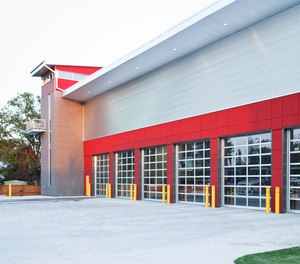
With $1 billion potentially at stake, we need to ensure effective use of the funds
In June, U.S. Representatives Bill Pascrell, Jr. (D-NJ-09), Brian Fitzpatrick (R-PA-01) and Michael Bost (R-IL-12), co-chairs of the Congressional Fire Services Caucus , introduced bipartisan legislation that would help construct new fire stations or renovate existing stations. If approved, the Fire Station Construction Grants Act (HR 3728) would authorize $1 billion in grants administered by the Federal Emergency Management Agency (FEMA).
In 2019, the National Fire Protection Association (NFPA) released the report Renovations Needs of the U.S. Fire Service . This report showed that 43% of the surveyed fire stations are more than 40 years old. In many cases, they are not equipped with cancer-preventing exhaust emissions control systems. Approximately one-third of the surveyed firehouses did not have access to backup power. In addition, these stations may be affected by mold, old ventilation systems and other environmental problems, and they may not have crew quarters for female fire and EMS personnel. Due to budget cuts and lack of federal grant funding , fire departments are often unable to upgrade or replace these facilities.
HR 3728, the Fire Station Construction Grants Act , would authorize $1 billion in fire station construction grants administered by FEMA to:
The legislation requires that FEMA allocate 25% of the grants for career fire and EMS departments, 25% of the grants for combination fire and EMS departments, and 25% of the grants for volunteer fire and EMS departments. The remaining 25% would be open to competition between the various department types. Grantees must meet prevailing wage and labor standards requirements under the Davis-Bacon Act and procurement requirements under the Buy American Act . Grant awards are limited to $7.5 million per project.
In 2009, Congress authorized $210 million for a Station Construction Grant Program (SCG) to build new or renovate existing fire stations. It was part of an expansive program to address the effects of the 2008 Recession.
There were 6,025 applications totaling $9.9 billion for the SCG grants. FEMA awarded 119 grants. For successful applicants, it was like finding the pot of gold at the end of the rainbow. Never in their wildest dreams did they imagine they would land a new fire station. For the approximately 5,900 that didn’t get funded, the rejected application was not merely a matter of disappointment; many departments were dealt a negative impact to their budget just by applying. Why? The grant program was prioritizing “shovel-ready” projects. To apply for funding for a new station, you needed to hire an architect to develop plans and cost estimates. If you didn’t have a property under your control you had to locate a suitable property, have a title search done and secure an option on that parcel. All these services cost the unsuccessful applicants money they didn’t have.
HR 3728 would appropriate $1 billion for a new station construction grant program. The bill would only allocate funding for the program. How the grant program would operate would be determined by FEMA. I have some thoughts on how to get this funding to more departments in a shorter period and not have the applicant incur any upfront costs. Here are my suggestions:
These are simply suggestions for maximizing the efficiency and effectiveness of a program to provide funding to departments that need station improvement projects. As the NFPA survey discovered, there is a drastic need for a grant program to address the condition of fire stations across our nation. Please encourage your representative in Congress to support HR 3728.
Copyright © 2025 FireGrantsHelp.com. All rights reserved.
